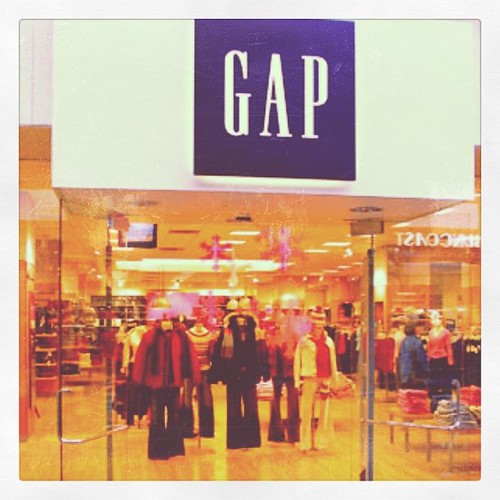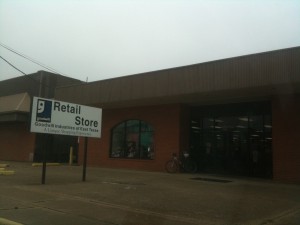
The Gap had a humble beginning in 1969 when Robert Fisher and his wife Doris Fisher opened the first gap clothing store in San Francisco with a choice of merchandise comprising Levi’s and LPs a volatile combination as the Fishers learned after one year reaching an unprecedented $2 million in sales. The Gap rapidly expanded it’s locations reaching 25 by 1973 and soon there after introduced private label merchandise. The expansion of The Gap unceasingly escalated not only in the growth of it’s stock and brand but also through various corporate offspring such as The Banana Republic or The Old Navy each tailored to a specific niche in the clothing market.
The Gap began by appealing to young peoples desire for a simple and attractive style, a style symbolised by The Gap’s early, popular ensemble of blue jeans and plain white cotton shirts. However, over the years The Gap has drifted from the original core consumer base that had brought it such rapid success. As The Gap concentrated on minimalistic styles it had slowly obscured the simplistic direction and alienated it’s target consumers in a wave of khaki and fleece.
But recently The Gap has shown strong design sense in clothes that have a classic and simple feel that makes it a versatile wardrobe component for a huge variety of customers, apparently successfully backtracking in order to appease consumers in a brilliantly multifaceted marketing approach that gives something to be appreciated to a variety of subcultures fashion senses. While The Gap has shown it’s prowess in business and fashion design they have drawn criticism for their labor practices.
On several occasions in 2003, 2006 and 2007 The Gap was accused and caught using suppliers operating under deplorable standards, using child labor, imposing forced abortion policies, as well as unpaid workers. In the 2003 instance The Gap was subject to a class action law suit on these charges yet refused to admit liability despite reaching a settlement of $20 million. The Gap has always voiced concern and ignorance in the wake of these accusations, showing a desire to keep a clean public image, in fact, in a confusing decision The Gap was named one of the worlds top 100 most ethical companies by Ethisphere Magazine in 2007 the same year the BBC aired footage of child labor practices in sweatshop suppliers to The Gap.
The Gap has upheld it’s position against such deplorable worker conditions as anyone would expect every single time they were exposed to be using it. But until more recent evidence surfaces it may be that they have corrected the ethical violations in question. In the end The Gap is a quality clothing retailer, who despite graphic design and business ethics issues contributes to the unique styles of many different characters. Although, until they start selling records again they will never reach their ultimate retail potential.

